By Heidi Sutton
When a One-Act Play Festival receives 415 submissions, it cannot be easy to choose just a handful. But that’s exactly what Theatre Three’s Festival of One-Act Plays founder and Executive Artistic Director Jeffrey Sanzel was tasked with doing this year and the result is extraordinary. Showcasing seven original works, the annual festival opened last weekend for a 10-performance run.
“For the first time on any stage, these works come to life,” explained Sanzel, who also serves as director. “These are premieres; they are ‘firsts.’ A comedy [is] followed by a drama, a farce by an experimental work …” in a two-hour marathon in the cozy setting of The Ronald F. Peierls Theatre on the Second Stage, a space so intimate that it “allows the audience to breathe the same air as these … characters. There is no wall. There is no division.”
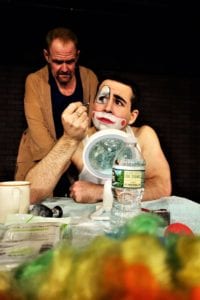
The show kicks off with Chip Bolcik’s “At the Circus,” starring veteran actor Steve McCoy and festival newcomer Dylan Robert Poulos. In an ironic twist, a trapeze artist (McCoy) and a clown (Poulos) have grown tired of life in the circus and dream of a life of normalcy, of running away with the audience. They long to have a house with a window to look out of, a driveway, the opportunity to drive to the grocery store. “They have no idea how lucky they are, do they?” wonders Poulos as he looks longingly into the crowd, giving nod to the old adage “The grass is always greener on the other side of the fence.”
Next up is “Interview with the First Family” by Tom Slot, a behind-the-scenes reality TV look at what really happened in the Garden of Eden and where they are now. Adam (Antoine Jones) is a surfer, Eve (Susan Emory) works at a bakery — “People can’t get enough of my apple pie,” Cain (Morgan Howell Rumble) is a convict doing time for killing his brother Abel and God (Linda May) is just sitting back seeing how the world spins and working on her stand up act. Her biggest regret? Creating the mosquito.
“Plumb Desire,” written by Patrick Gabridge, is a hilarious take on how hard it is to find a good handyman these days and the relationships that develop. Darius (played by Steve Wangner) has found such a man in Jackson (Dondi Rollins), a plumber who has been renovating his bathroom. Jackson hasn’t shown up lately so Darius tracks him down and tries to woo him back with flowers and a six pack of beer. “I’ve been searching for a plumber for so long and you are the one,” he whines, adding, “Do you remember when we replaced all the vents on the radiators?” Jackson finally breaks down and admits that “sometimes plumbers can be flaky — it comes with the territory.” Will he be back on Monday to finish the job?
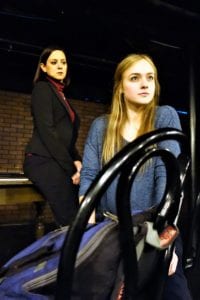
Comedy switches to drama with Andrea Fleck Clardy’s “After Class.” Madison (Meg Bush in a powerful performance) is a mentally disturbed student who speaks of bringing a gun she’s nicknamed “Kim” to class as her teacher Amy Clausen (TracyLynn Connor) struggles with handling the scary situation.
After intermission, “Bird Feed” by Melanie Acampora takes center stage. Three pigeons sit on a ledge in Manhattan chatting. It’s Georgie’s (Susan Emory) birthday — she’s two years old today. Her friends Bertha (Meg Bush) and Rayna (Nicole Bianco) want to take her out to celebrate when Bertha overhears someone saying that the average life span of a pigeon is just two and half years, leading to a contemplation on birthdays and mortality.
There’s a mole loose in the world of acting in Jack McCleland’s “Dark.” It’s open hunting season and actors are being picked off one by one. Every time they find a hiding spot, they are mysteriously found and shot to death. Three actors — Steve (Morgan Howell Rumble), Meg (TracyLynn Conner) and understudy Carl (Dondi Rollins) are holed up in a warehouse and are being ordered to come out. “Leave us in peace! We’re actors — we just want to do plays!” they plead. One last warm up and they venture outside and the snitch is finally revealed as Ethel Merman’s rendition of “No Business Like Show Business” plays jubilantly in the background.

Sanzel saves the best for last with Charles West’s courtroom spoof, “Home Versus the Holidays.” A man is on trial for waving a sword at a church group singing Christmas carols in front of his home. The audience is sworn in as the jury and the judge (Linda May) calls the first witness to the stand, the chaperone to the group (Steve Wangner).
After the district attorney (Nicole Bianco) asks him some questions, the defense lawyer (Antoine Jones) is allowed to cross-examine and hilarity ensues. Using visuals, song lyrics and the alleged weapon, Jones turns the Christmas spirit on its head in a stunning performance that must be seen to be believed. You’ll be in stitches long after the show ends.
With an excellent lineup and incredible cast, this festival is not to be missed. Get your ticket before they’re sold out.
The cast: Nicole Bianco, Meg Bush, TracyLynn Conner, Susan Emory, Antoine Jones, Linda May, Steve McCoy, Dylan Robert Poulos, Dondi Rollins, Morgan Howell Rumble, Steve Wangner
Sponsored by Lippencott Financial Group, Theatre Three, 412 Main St., Port Jefferson will present The 21st Annual Festival of One-Act Plays through May 6. Contains adult language and subject matter. Parental discretion is advised. Running time is two hours with one 15-minute intermission. Tickets are $20. To order, call the box office at 631-928-9100 or visit www.theatrethree.com.
All photos by Peter Lanscombe, Theatre Three Productions Inc.







 After being open only a week, her childhood nemesis and unreformed mean girl, bakery owner Ashley Winthrop, announces that her store, Sweet Things, will begin carrying ice cream. As the bakery is directly across from the ice cream parlor, this drives Kate into a public confrontation with Ashley. Soon after, Ashley is discovered murdered and the police see Kate as a possible suspect.
After being open only a week, her childhood nemesis and unreformed mean girl, bakery owner Ashley Winthrop, announces that her store, Sweet Things, will begin carrying ice cream. As the bakery is directly across from the ice cream parlor, this drives Kate into a public confrontation with Ashley. Soon after, Ashley is discovered murdered and the police see Kate as a possible suspect.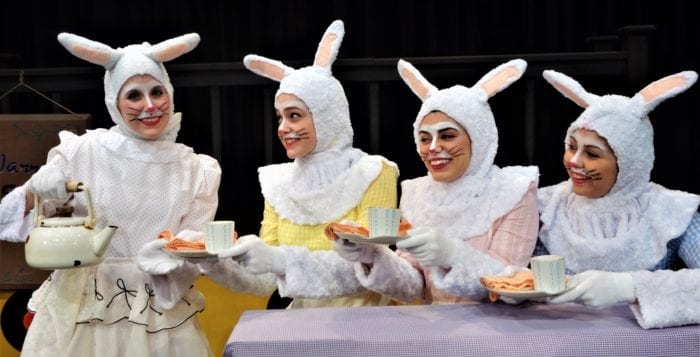

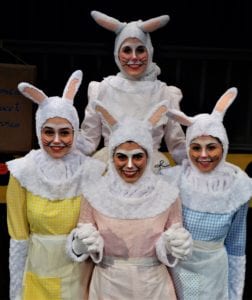
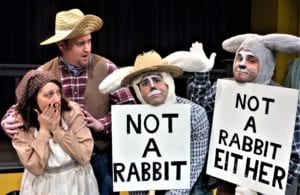



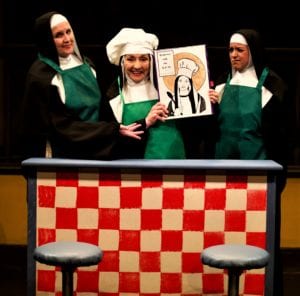




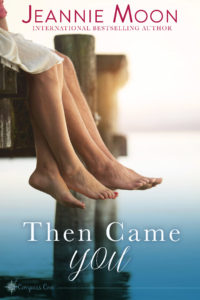
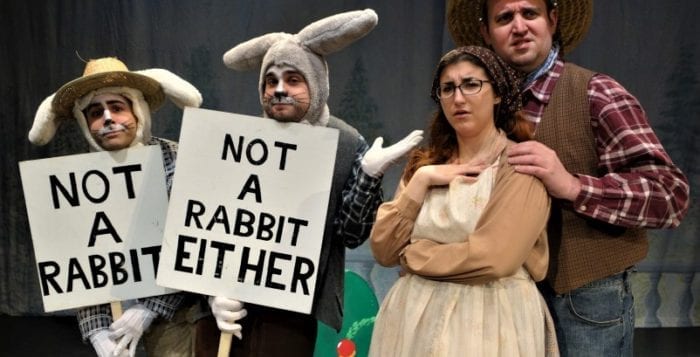
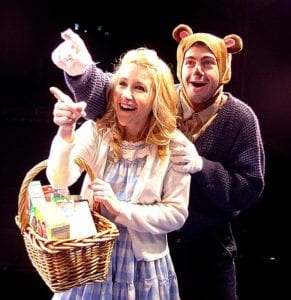




 “Losing stuff, like losing weight, is a lost cause.” We have too many things — we are saturated as “willing prisoners” of our acquisitions. Again, he turns his accusations inward and finds the positive in what has become a negative cliché — he finds the value in “stuff” as a connection to who we are related to from where we’ve come.
“Losing stuff, like losing weight, is a lost cause.” We have too many things — we are saturated as “willing prisoners” of our acquisitions. Again, he turns his accusations inward and finds the positive in what has become a negative cliché — he finds the value in “stuff” as a connection to who we are related to from where we’ve come.


